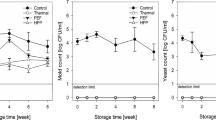Abstract
It has been observed in some mineral processing plants that grinding circuit efficiency varies seasonally, such as in some plants which are located in the northern US and Canada and undergo large seasonal temperature changes, with the grinding circuit efficiency different between summer and winter. This indicates that the temperature of grinding circuit slurry has a noticeable effect on grinding performance. The effect has rarely been studied. To this end, an investigation to examine the effects of changing temperature on efficiency and determination of the mechanism responsible has been carried out. Plant investigations and laboratory experiments have been conducted in order to study hydrocyclones. It was demonstrated that when the pressure drop is held constant, the d50(c) size decreased approximately linearly with increasing temperature, while the shape of the reduced efficiency curve remained nearly constant. This effect was determined to be due to changes in slurry viscosity with temperature.
Similar content being viewed by others
References
Agar, G. E. and Herbst, J. A., 1966, “The Effect of Fluid Viscosity on Cyclone Classification”, Trans. SME-AIME, vol. 235, pp. 145–149.
Austin, L. G., Klimpel, R. R., and Luckie, P. T., 1984, Process Engineering of Size Reduction: Ball Milling, AIME, New York.
Bradley, D., 1965, The Hydrocyclone, Pergamon Press Ltd., London.
El-Shall, H., Somasundaran, P., 1984, “Mechanisms of Grinding Modification by Chemical Additives: Organic Reagents”, Powder Technology, Vol. 38, pp. 267–273.
Fuerstenau, D. W., Venkataraman, K. S., and Velamakanni, B. V., 1985, “Effect of Chemical Additives on the Dynamics of Grinding Media in Wet Ball Mill Grinding”, International Journal of Mineral Processing, Vol. 15, no. 4, pp. 251–268.
Herbst, J. A., and Rajamani, K, 1979, “Control of Grinding Circuits”, in Computer Methods for the 80’s, A. Weiss, ed., AIME, New York, pp. 770–786.
Kampf, H. J., 1985, personal communication.
Klimpel, R. R., 1982, “The Influence of a Chemical Dispersant on the Sizing Performance of a 24-inch Hydrocyclone,” Powder Technology, Vol. 31, pp. 255–262.
Klimpel, R. R., 1984, “Influence of Material Breakage Properties and Associated Slurry Rheology on Breakage Rates in Wet Grinding of Coal and Ores in Tumbling Media Mills,” in Reagents in the Minerals Industry, M. J. Jones and R. Oblatt, eds., Institution of Mining and Metallurgy, London, pp. 265–270.
National Materials Advisory Board (NMAB), 1981, Comminution and Energy Consumption., NMAB-364.
Author information
Authors and Affiliations
Additional information
SME preprint 88-1, SME Annual Meeting, Phoenix, AZ, January. M&MP paper 88–639. Discussion of this paper must be submitted, in duplicate, prior to July 31, 1989.
Rights and permissions
About this article
Cite this article
Kawatra, S.K., Eisele, T.C., Zhang, D.X. et al. Temperature effect on grinding circuit performance. Mining, Metallurgy & Exploration 6, 85–87 (1989). https://doi.org/10.1007/BF03402532
Received:
Published:
Issue Date:
DOI: https://doi.org/10.1007/BF03402532




